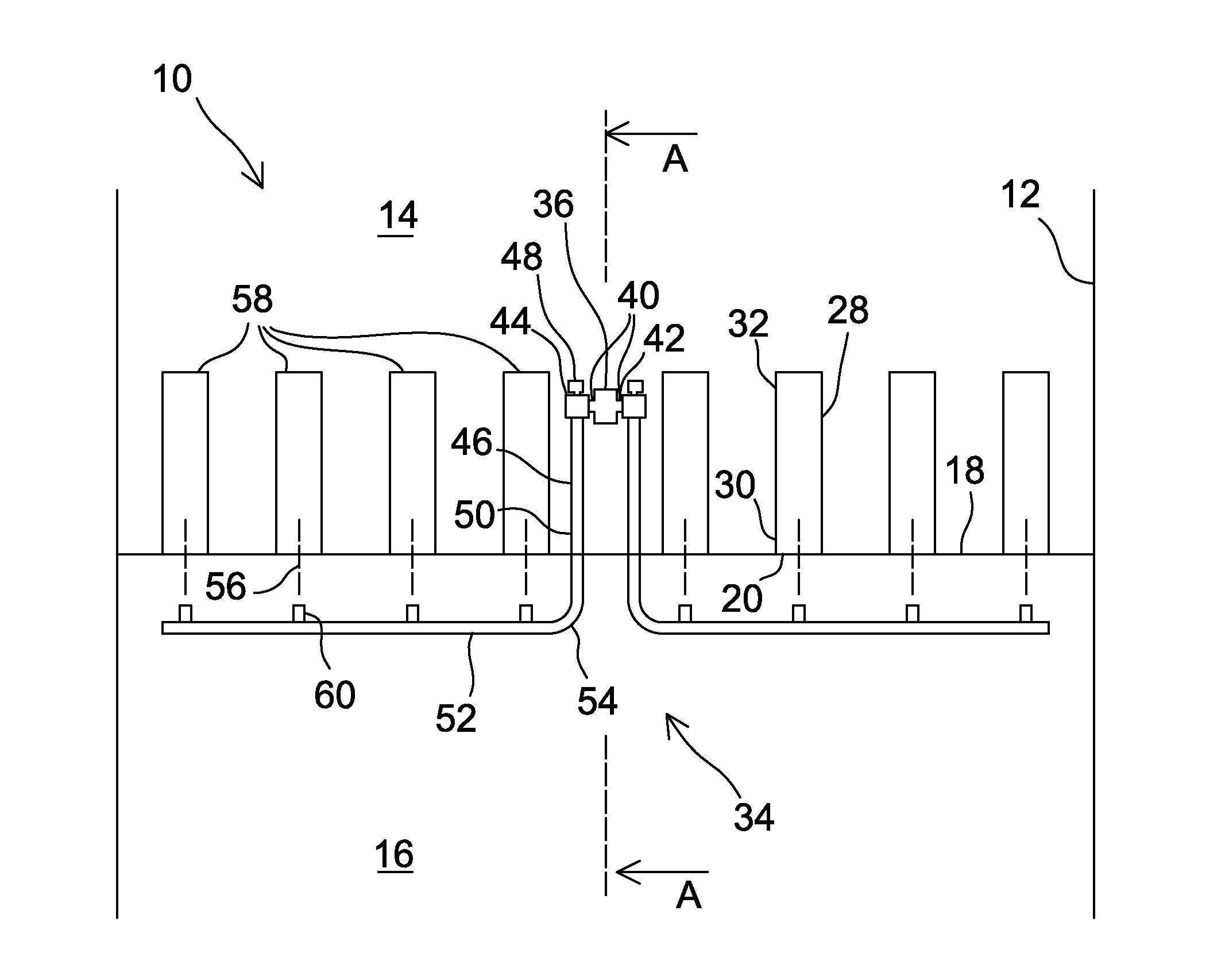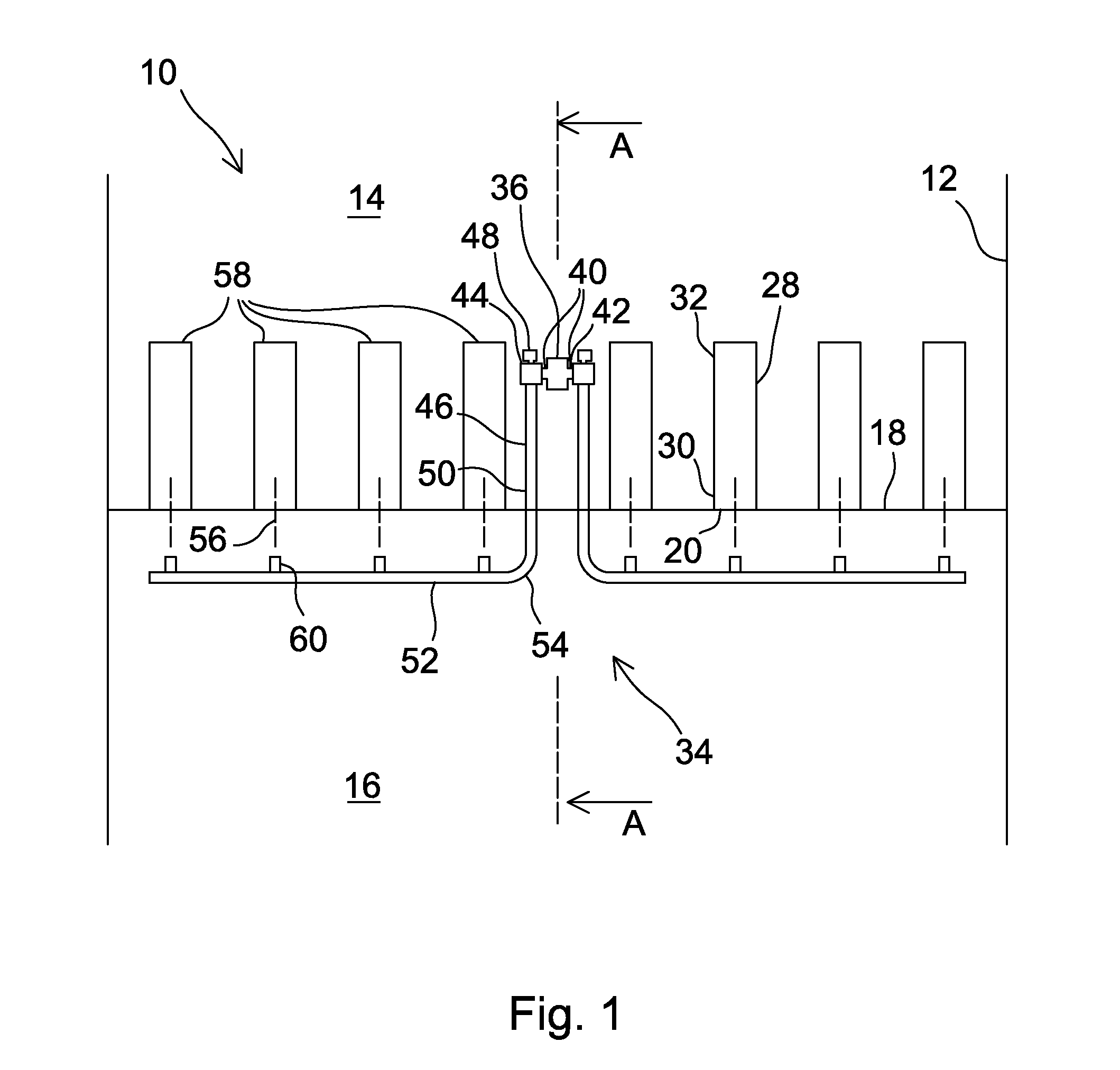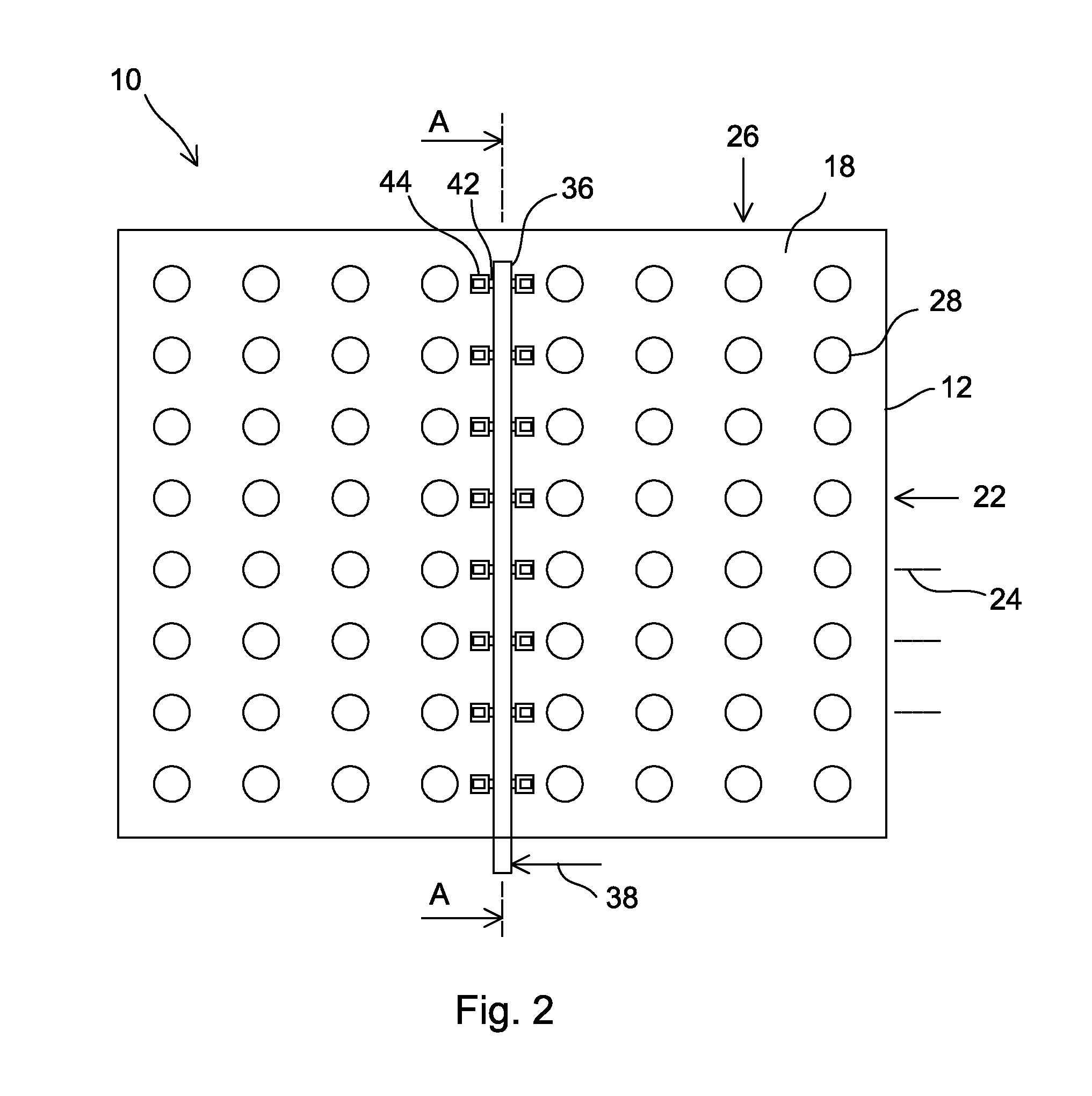Pulse cleaning filter system arrangement
- Summary
- Abstract
- Description
- Claims
- Application Information
AI Technical Summary
Benefits of technology
Problems solved by technology
Method used
Image
Examples
Embodiment Construction
[0027]FIGS. 1, 2, and 3 schematically depict a top view, a side view from the inlet side, and a cross-sectional view along line A-A in FIGS. 1 and 2, respectively, of a pulse cleaning filter system arrangement 10, according to an embodiment of the present invention. The pulse cleaning filter system arrangement 10 can be utilized, for example, for separating harmful particulates from ambient air for a gas turbine by forcing the ambient air through the filter system.
[0028]The pulse cleaning filter system arrangement 10 comprises a housing 12 with an inlet side 14 and an outlet side 16, separated by a vertically arranged planar tubesheet 18. The tubesheet 18 comprises multiple tubesheet openings 20 arranged in a square array of horizontal rows 22, at multiple vertical levels 24, and vertical columns 26. Each of the tubesheet openings 20 is associated with a cylindrical filter cartridge 28 having an open end 30 sealed around the perimeter of the tubesheet opening 20 and a closed end 32 ...
PUM
| Property | Measurement | Unit |
|---|---|---|
| Length | aaaaa | aaaaa |
| Length | aaaaa | aaaaa |
| Length | aaaaa | aaaaa |
Abstract
Description
Claims
Application Information
 Login to View More
Login to View More - R&D
- Intellectual Property
- Life Sciences
- Materials
- Tech Scout
- Unparalleled Data Quality
- Higher Quality Content
- 60% Fewer Hallucinations
Browse by: Latest US Patents, China's latest patents, Technical Efficacy Thesaurus, Application Domain, Technology Topic, Popular Technical Reports.
© 2025 PatSnap. All rights reserved.Legal|Privacy policy|Modern Slavery Act Transparency Statement|Sitemap|About US| Contact US: help@patsnap.com



